September 10 – the day Lang Nu village, Phuc Khanh commune, Bao Yen district, Lao Cai province, was almost “erased”. At least 58 people were confirmed dead, of which 9 are still missing, despite the search by hundreds of officers and soldiers for more than 2 weeks.
As one of the mobilized units, the Capital Mobile Police Regiment (E22, Mobile Police Command of the Ministry of Public Security) sent 100 officers and soldiers to Lang Nu to organize rescue and search for victims.

At 9:00 a.m. on September 13, Lieutenant Colonel Dang Hong Tinh, Deputy Commander of Regiment E22, and his comrades moved from the Regiment's headquarters in Soc Son District (Hanoi) to Phuc Khanh Commune. After more than 7 hours of marching, the CSCĐ soldiers arrived at Lang Nu Village.
On the way, Lieutenant Colonel Tinh only knew that the place he was going to for his mission was seriously flooded, many people were in trouble, and there was almost no information from the scene because Lang Nu was completely isolated from the transmission line at that time.
However, the closer he got to Nu Village, the more clearly Tinh felt the seriousness and danger.
“After completing the Hanoi – Lao Cai Expressway, the group turned to Highway 70 to reach Bao Yen District. Along the highway, there were many landslides, and there was always a risk of further incidents,” said Lieutenant Colonel Tinh.
Arriving at Lang Nu, the scene before the Deputy of Regiment E22 was "beyond imagination".
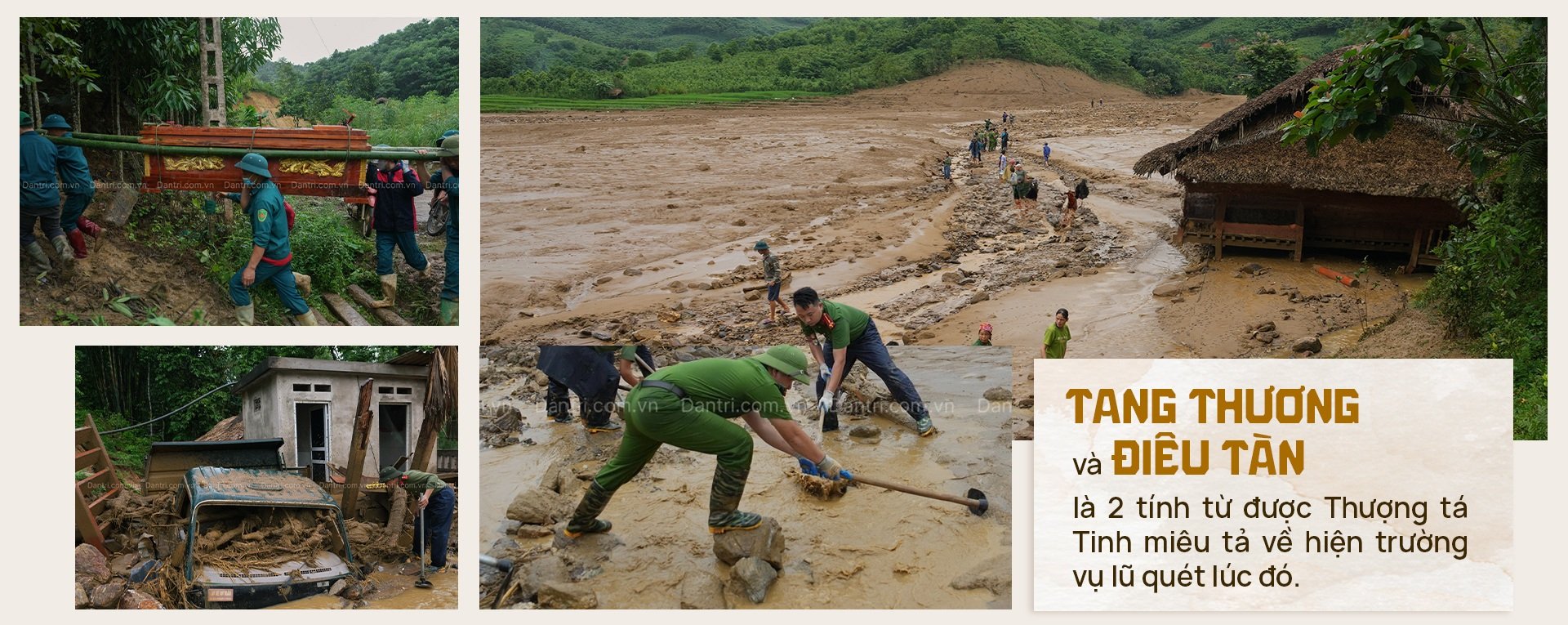
Tragic and desolated are two adjectives that Lieutenant Colonel Tinh used to describe the scene of the flash flood at that time.
“The entire village only had a few roofs left, the rest was mud, soil, rushing stream water and a strong smell of death,” the commander recounted, adding that the area the Regiment was assigned to search was downstream, where it was believed many bodies were buried.
Observing the people present at the scene, including many local residents and relatives of the victims, Lieutenant Colonel Tinh felt their fatigue and despair through their listless, dazed and "soulless" faces.
“I felt so sorry for my fellow countrymen. I wondered why natural disasters were so terrible and fierce. At that time, all I could think about was how to get the assignment, quickly stabilize the soldiers’ accommodation and get to work,” said Lieutenant Colonel Dang Hong Tinh.
Despite the high spirits, Mr. Tinh, as the commander of the group, was still worried about the safety of his fellow soldiers, as the Lang Nu village area was very unstable and landslides and flash floods were still occurring in many places.

Describing the assigned area, Lieutenant Colonel Tinh said the search area was about 750 square meters, along 5 kilometers of flood sweep on a stream about 150 meters wide. Holding 100 soldiers, the commander divided them into 3 groups, each group of 30 soldiers, and the remaining 10 people, Tinh assigned the task of logistics and driving.
For the 3 search teams, the Colonel asked each team to divide into 3 groups, working "rolling" horizontally across the stream, searching carefully, finishing as they went. Each soldier was equipped with masks, life jackets, gloves...
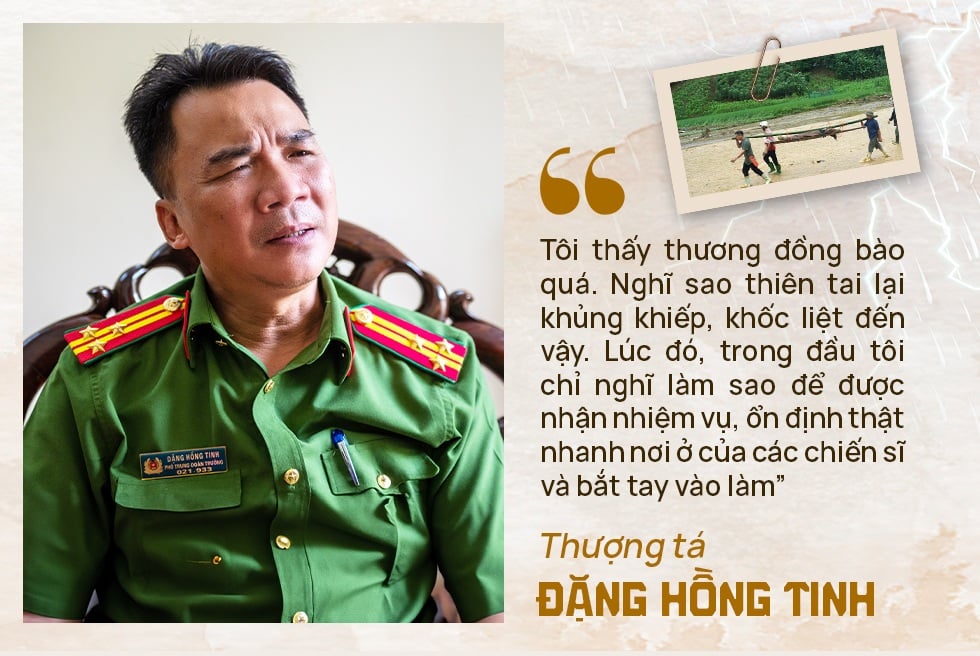
However, for Mr. Tinh and many CSCĐ soldiers in the group, the experience of searching and rescuing people in incidents and natural disasters is almost zero. Therefore, the group immediately learned from the experience of the units that had organized the search before.
“Each soldier, depending on the person, will carry a crowbar, shovel or stick 2-3m long, poking into the mud layer. When pulling it out, if there is a foul smell, it is suspected that there is a body underneath. The body here is not necessarily a human body but could be an animal.
In addition, to determine where the body is, soldiers also rely on the direction of the flies. Wherever they land, there is a high probability that the body is there.
Another source is information and information from local people. People living here know the area well, such as where there used to be a pond, bodies might be stuck there, or which stream has a current that can easily leave bodies to be swept away," Lieutenant Colonel Tinh recounted the search method and said that the support of the people is very important.
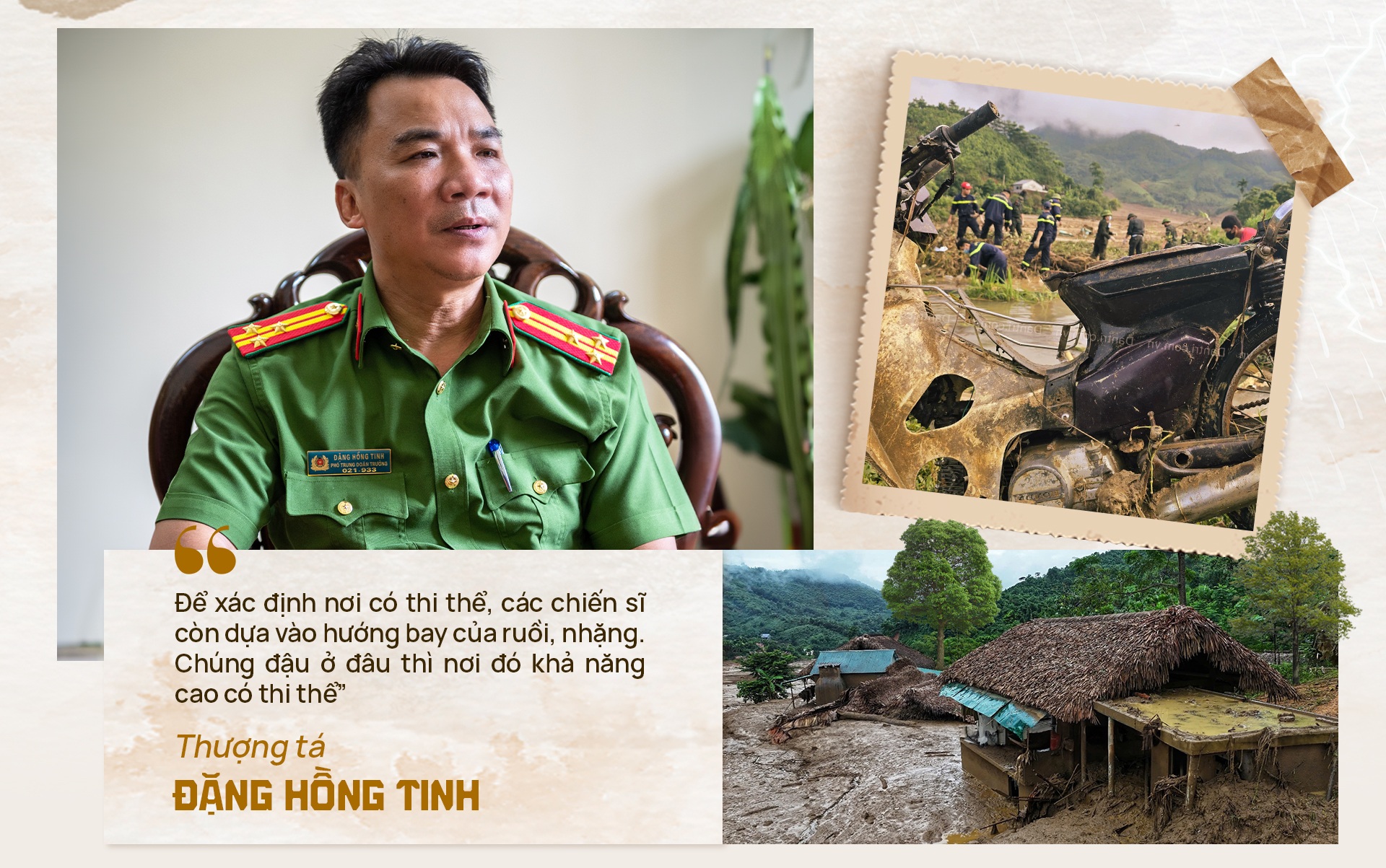
The method was available and the personnel were actively deployed, but it was not until around 5:00 p.m. on September 15 that Lieutenant Tinh received the first report via walkie-talkie about finding the bodies of people killed in the flash flood in Lang Nu.
Despite the pain, the commander still felt relieved that the efforts of all the soldiers had brought the last bit of comfort to the victims and their relatives.

Captain Pham Quang Chien is one of 90 CSCĐ soldiers directly wading through mud, searching for buried bodies in Lang Nu village.
On duty at the place that had just claimed the lives of dozens of people, Mr. Chien said that he was not afraid, partly because he was a soldier, assigned to carry out the mission, and partly because the Captain knew he was going to save his fellow countrymen in distress.
These days, Captain Chien is equipped with boots, a flak jacket… and a stick.
“Every time I poked my stick into the thick layer of mud, I hoped that underneath that layer of soil was the body of someone missing, which meant that every time I saw nothing unusual and pulled it up, I was disappointed,” said Mr. Chien.
Recalling, Captain Chien said that during the process of "searching for bodies at the bottom of the mud", there was a young man born in 2000 who kept asking him to go with him.
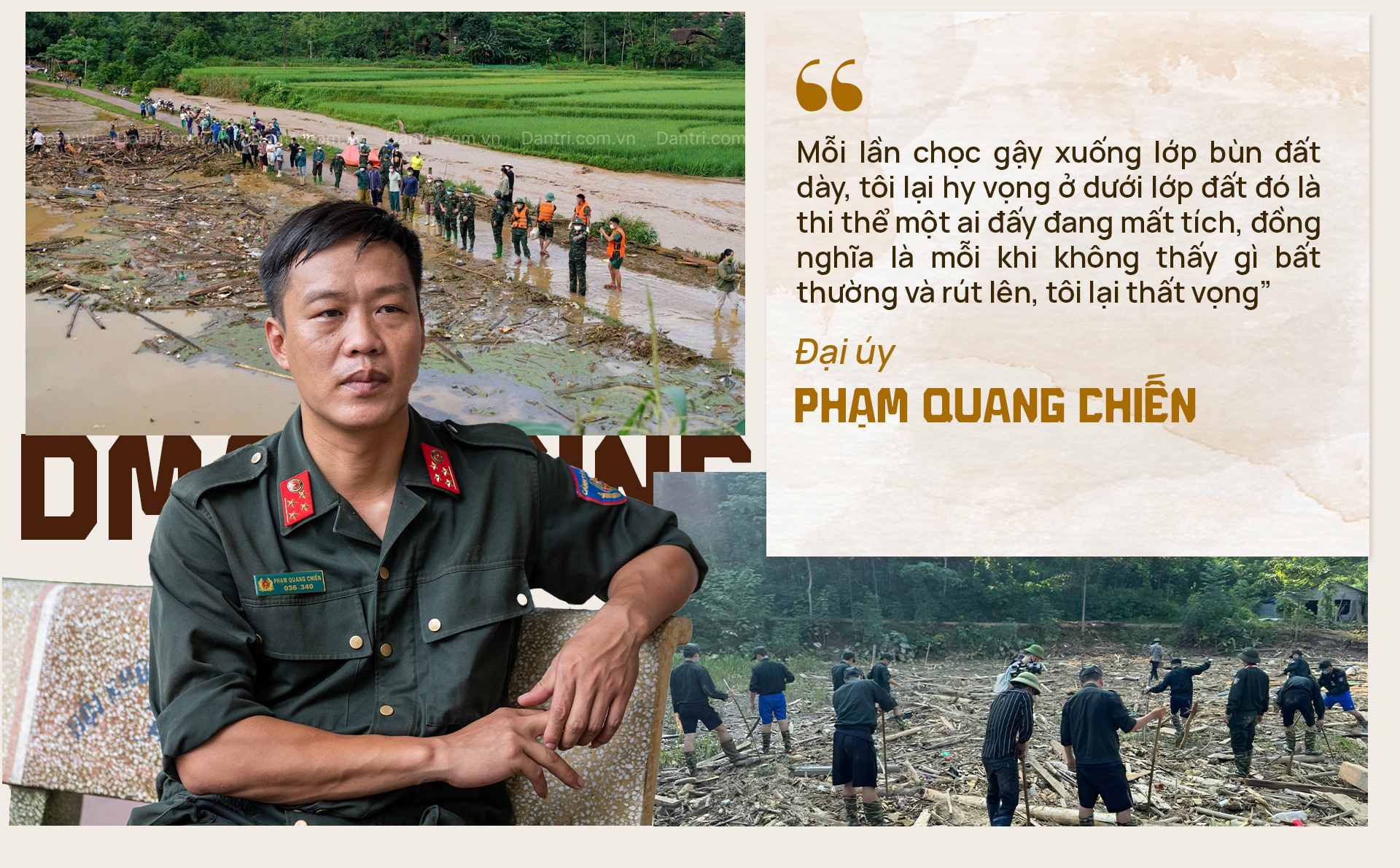
“The young man went to look for his mother. His family of 9 people were buried in the flash flood in Lang Nu. The bodies of 8 people have been found, but the body of the young man’s mother has not been found yet,” Mr. Chien shared.
In the rare moments of conversation, Captain Chien could only encourage the young man and promise to do his best to find his mother.
On the afternoon of September 15, Captain Chien’s search team discovered the body of a man near the end of the area they were assigned to search. The body was lying face down, with its back exposed at the edge of the mud. After reporting to the commander, Captain Chien and another soldier were sent to approach the body to recover it.
Mr. Chien and his teammates then put on life jackets, tied ropes to their bodies and were slowly lowered from a height of about 3m from the shore into the flash flood area. During the salvage, Captain Chien brought a sack to “wrap” the body in, ensuring “the bodies of our compatriots were not damaged”.
“At first I was a bit scared, because the body had been lying in the mud for several days and was in the process of decomposing. However, I immediately calmed down and tried to approach the body as gently as possible, avoiding damaging it,” the officer shared.
Because he did not want the body to be damaged, Mr. Chien did not use a hoe or shovel to dig the mud, but used his bare hands.
This step then became difficult when Captain Chien's hand kept pushing the mud away, but water and sand kept burying it. This forced the soldier to push continuously at a very fast speed, resulting in a deep cut from a piece of corrugated iron hidden in the mud.
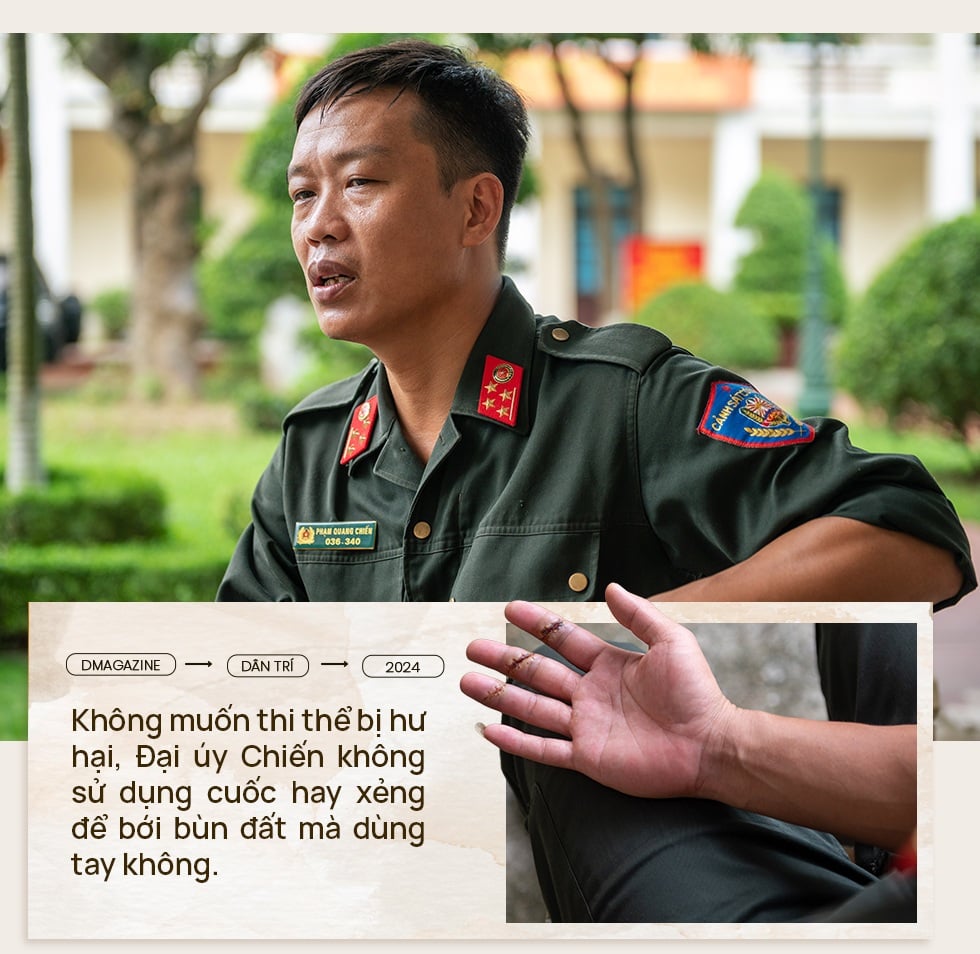
“The sheet metal cut through my glove, tearing four fingers off my right hand. I didn’t feel any pain at the time. I took off the torn glove, put on new gloves, dug again, put the victim’s body in a bag, tied a rope so that people on the shore could pull him up,” said Mr. Chien.
When the job was done, Captain Chien’s right glove was “splattered” with blood. The CSCĐ soldier was immediately taken to the emergency room, stitched up and given a tetanus shot. After first aid, Mr. Chien returned to the scene and continued his mission.
"The doctor told me the injury did not affect the bone, but that bending and grasping movements would be difficult in the future," Mr. Chien confided.
At around 7:00 p.m. the same day, E22 Regiment forces continued to find another female body, about 3km from the first body.

According to Lieutenant Colonel Dang Hong Tinh, on the first day of approaching Lang Nu village, the soldiers of Regiment E22 stayed at a local's stilt house, about 7km from the scene. Afterwards, the local authorities found and arranged for the soldiers to stay at a kindergarten, only about 1km from the flash flood site.
During the 8 days of duty here, Mr. Tinh and his teammates were helped by benefactors and locals who cooked meals for them in town, then brought them to Lang Nu for the soldiers to eat to ensure their health.
“The majority of Lang Nu villagers are Tay, Dao and Man ethnic groups. Their customs are very similar to the Kinh people and they are very affectionate. Whatever the locals have that can support us, they will give it all. When we need a place to bathe, do laundry or sleep, the locals will proactively invite us into their homes to do so.
At the first stilt house we stayed in on the first day, even a family member died in the flash flood. However, they still enthusiastically supported us,” Lieutenant Colonel Tinh shared.
According to the Deputy Regiment Commander, during their duties, CSCĐ soldiers could not avoid injuries, many of them stepped on nails.
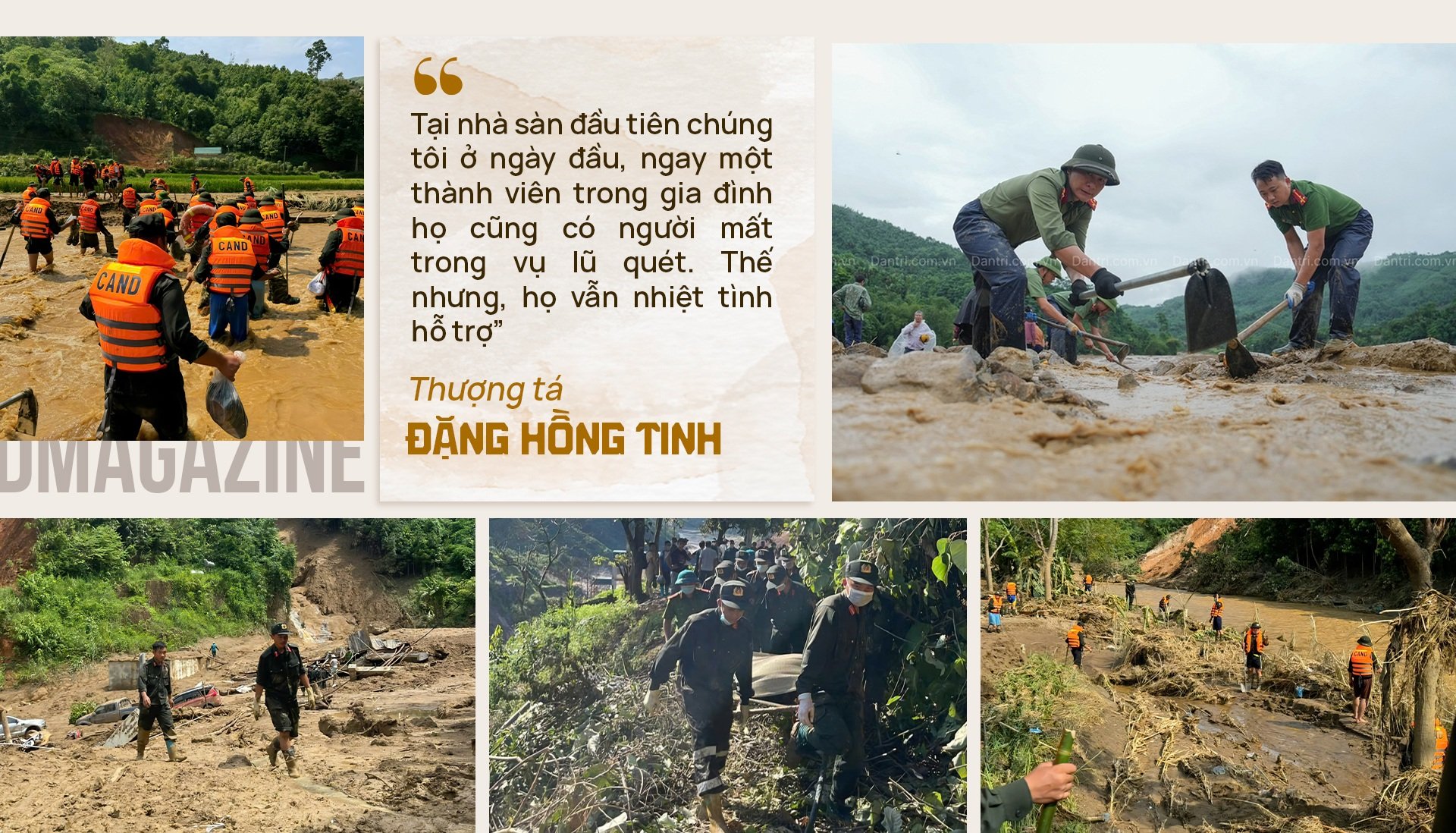
“Almost every day on the way to work, there are soldiers who are injured. In addition, soldiers have to wear boots when marching, which leads to blisters on the soles of their feet. Although many soldiers expressed their desire to wear plastic sandals, I did not allow it because I was worried that people would get injured,” said Lieutenant Colonel Tinh.
After 8 days of searching, the Capital Police Regiment recovered 2 bodies of victims of the flash flood in Lang Nu village. Returning home, Lieutenant Colonel Tinh was still filled with sadness and remorse as there were still bodies of his compatriots under the mud that had not been found.
According to Colonel Nguyen Van Hung, Commander of the Capital Mobile Police Regiment, during the Yagi storm and its circulation, the Regiment sent 300 officers and soldiers to Tuyen Quang, Lao Cai, Ha Nam, Hung Yen... to reinforce and coordinate with local forces to handle the consequences of the storm.
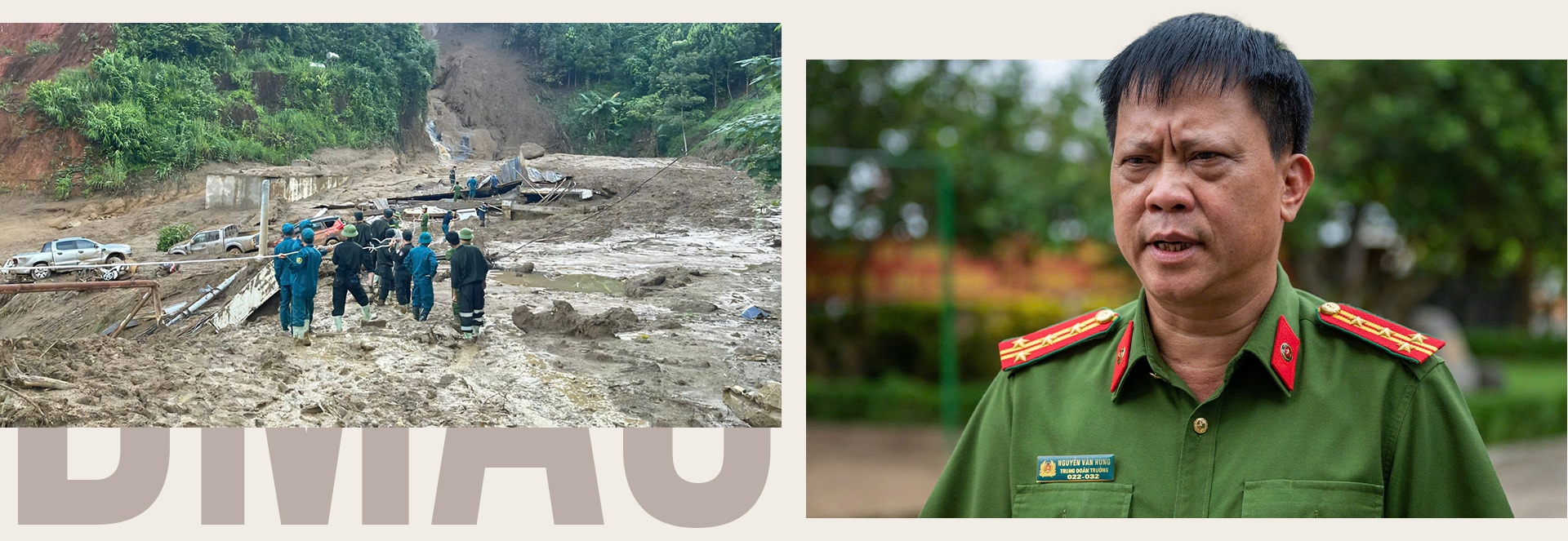
In Lao Cai, the Regiment mobilized 200 soldiers, divided into 2 groups. One group advanced to Lang Nu village, the other group went to Bac Ha district. In Bac Ha district, 100 CSCĐ soldiers continued to divide into 2 groups.
One group of 20 soldiers led by Major Dang Cong Khoi (Deputy Battalion Commander) went to search and rescue 4 missing victims in the landslide at the Southeast Asia Hydropower Plant. The second group went to Nam Tong village, where 18 people were missing under the rocks and soil.
After 15 days, 200 CSCĐ soldiers in Lao Cai successfully searched for a total of 20 victims' bodies to hand over to the locality and family for funeral arrangements.
In addition to search and rescue work, soldiers of Regiment E22 also helped people clean up their houses and overcome the consequences of the storm; and gave many gifts to people in Nam Luc commune, Bac Ha district.
Thereby, 2 groups and 47 individuals of Regiment E22 were awarded certificates of merit by the People's Committee of Lao Cai province, the People's Committee of Hai Ba Trung district (Hanoi), Lao Cai provincial police...
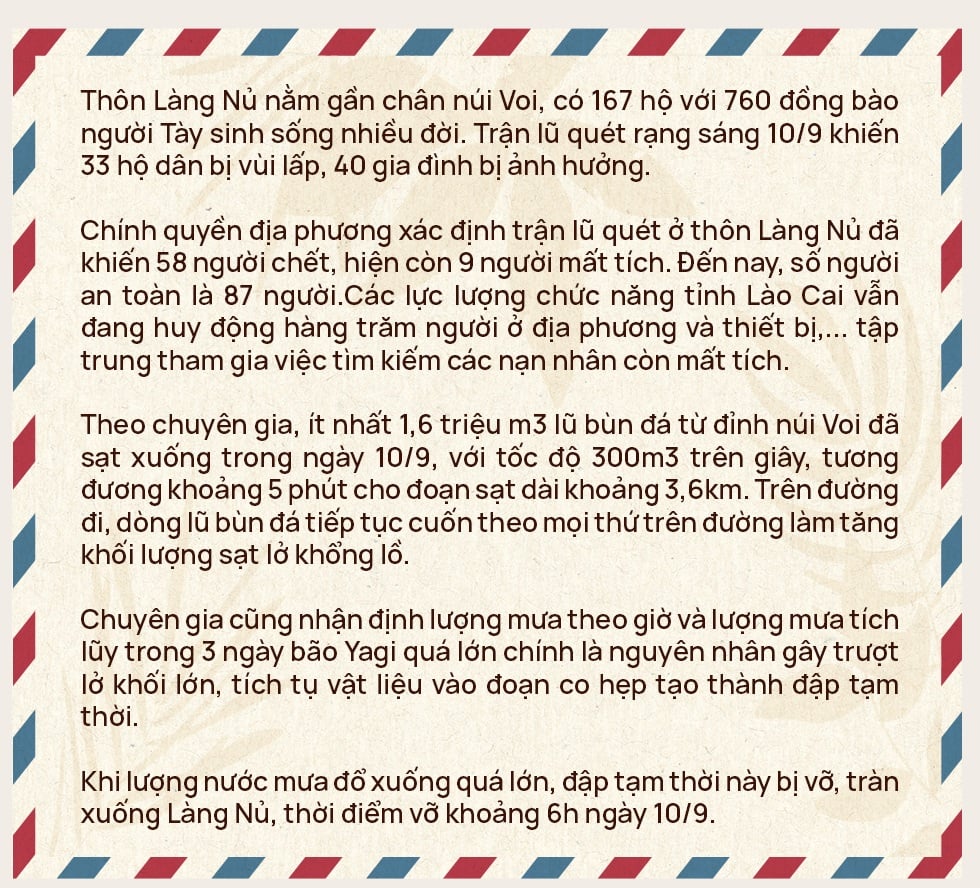
Dantri.com.vn
Source: https://dantri.com.vn/xa-hoi/chuyen-mo-xac-day-bun-tai-lang-nu-cua-nguoi-linh-cscd-20241004194141432.htm



![[Photo] Speeding up construction of Ring Road 3 and Bien Hoa-Vung Tau Expressway](https://vstatic.vietnam.vn/vietnam/resource/IMAGE/2025/3/31/f1431fbe7d604caba041f84a718ccef7)
![[Photo] Prime Minister Pham Minh Chinh receives delegation of leaders of US universities](https://vstatic.vietnam.vn/vietnam/resource/IMAGE/2025/3/31/8be7f6be90624512b385fd1690124eaa)
![[Photo] General Secretary To Lam receives US Ambassador to Vietnam Marc E. Knapper](https://vstatic.vietnam.vn/vietnam/resource/IMAGE/2025/3/31/5ee45ded5fd548a685618a0b67c42970)
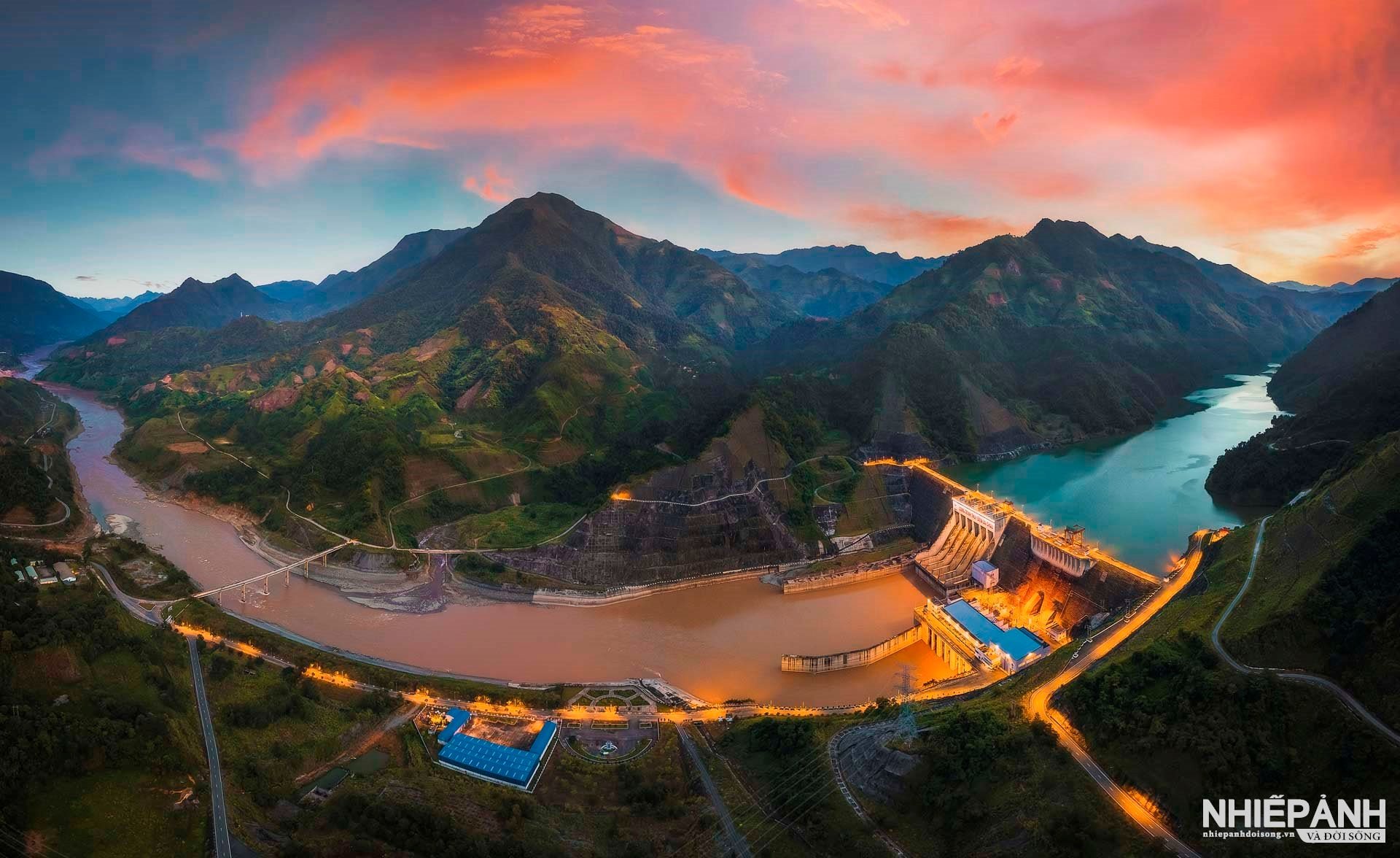
![[Photo] 2nd Conference of the Party Executive Committee of Central Party Agencies](https://vstatic.vietnam.vn/vietnam/resource/IMAGE/2025/3/31/8f85b88962b34701ac511682b09b1e0d)
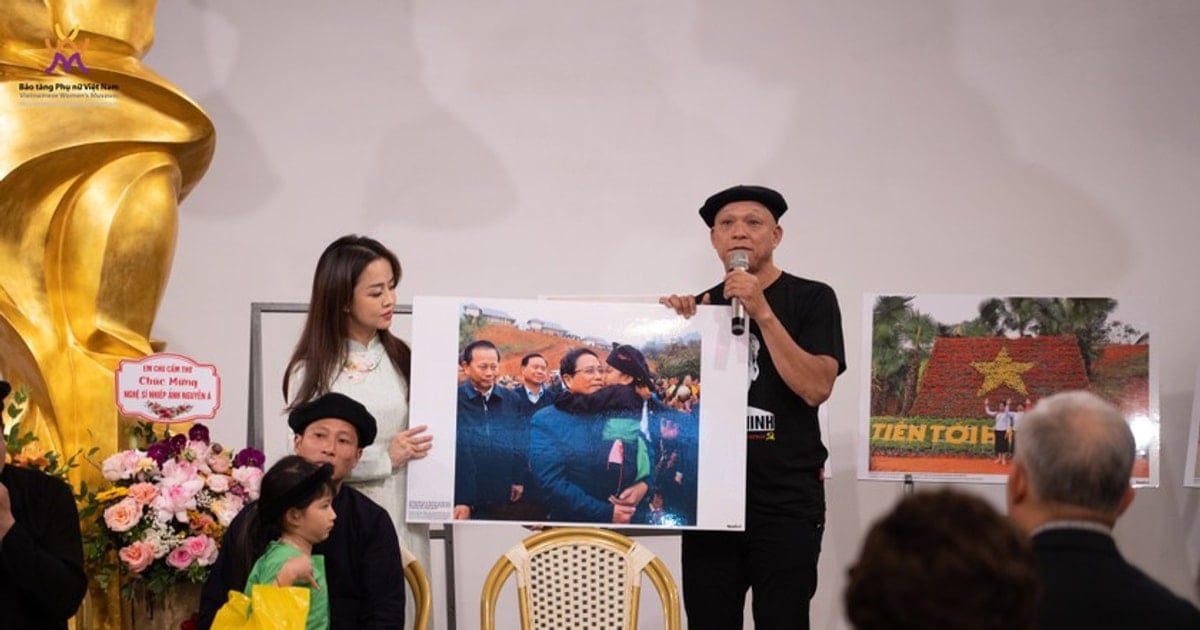

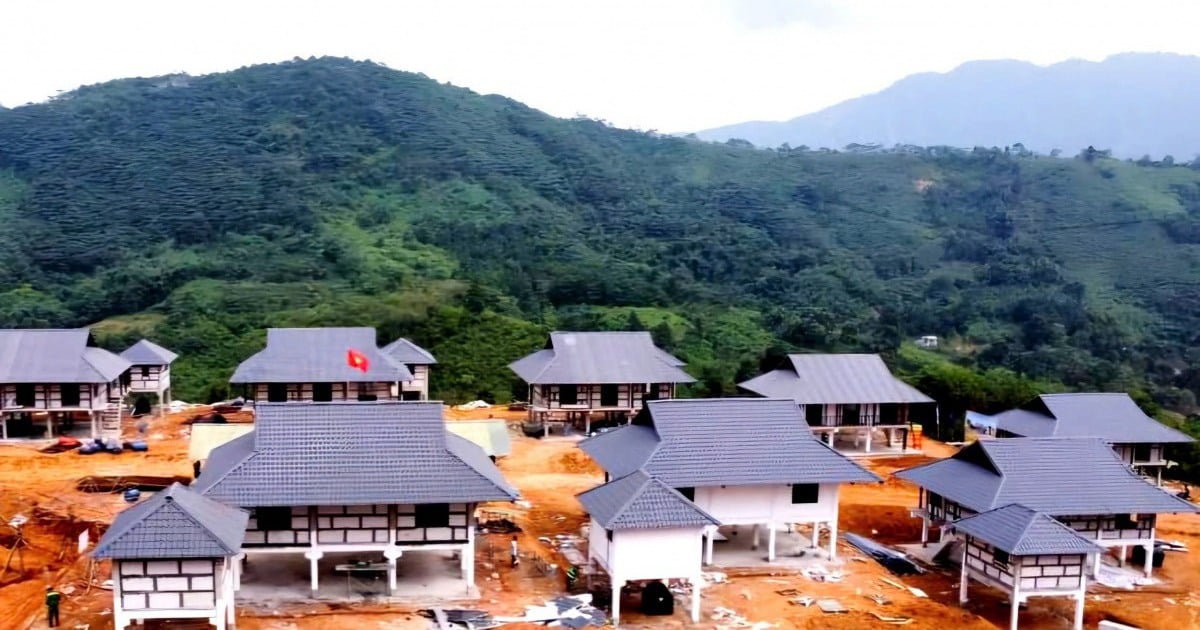






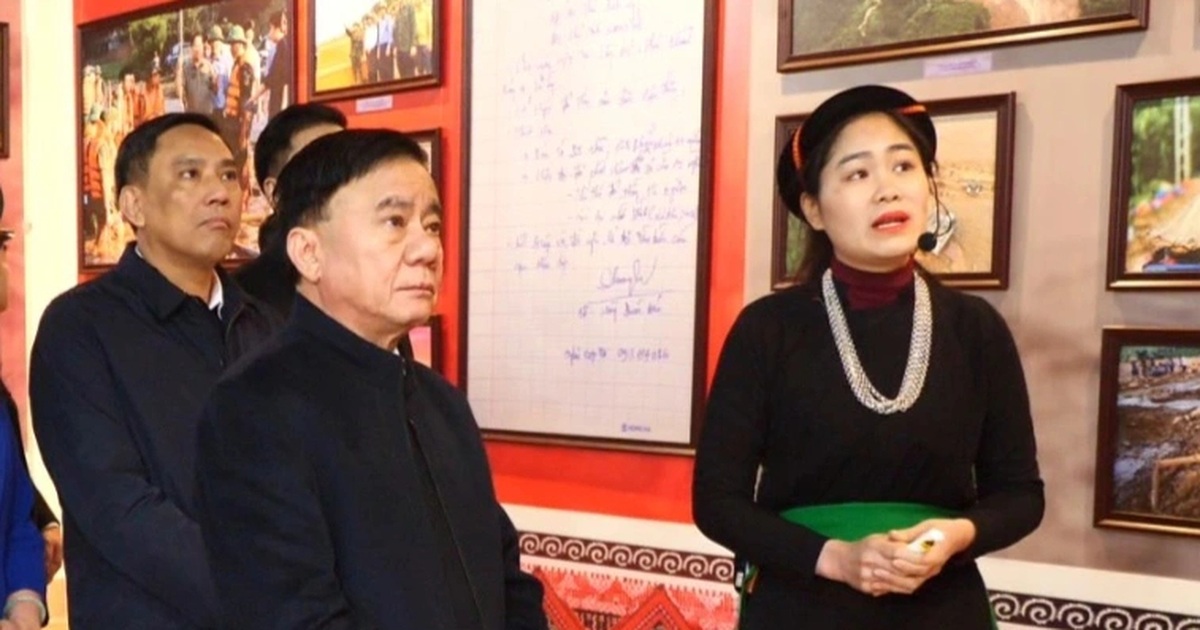


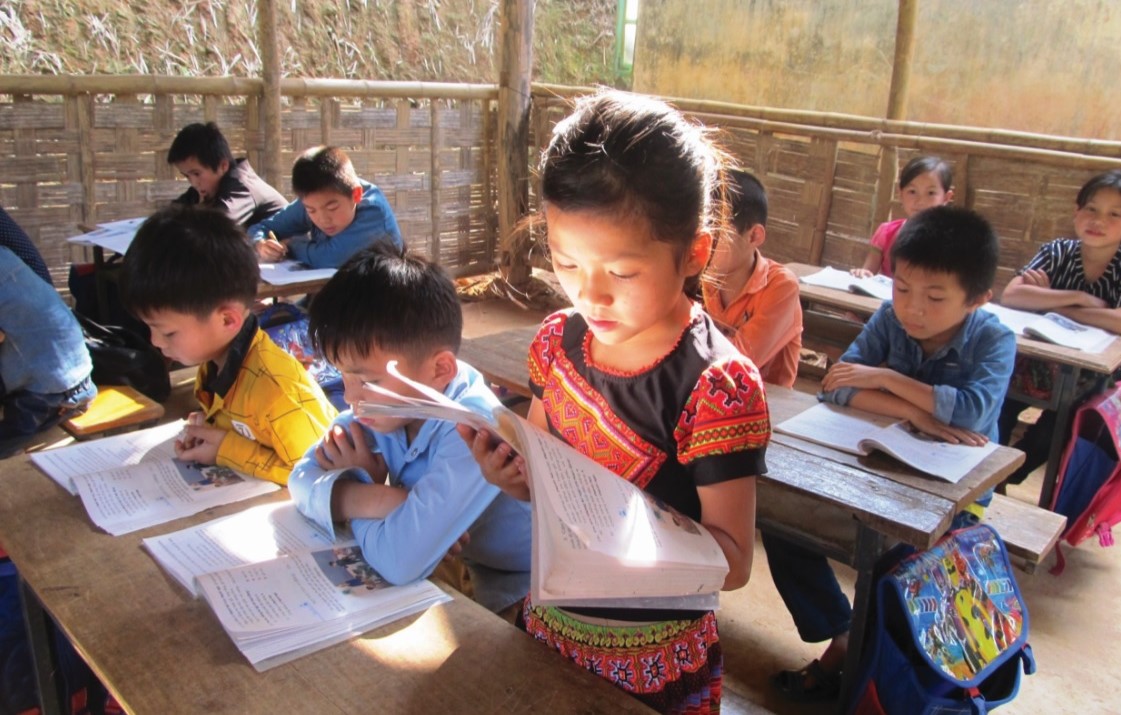



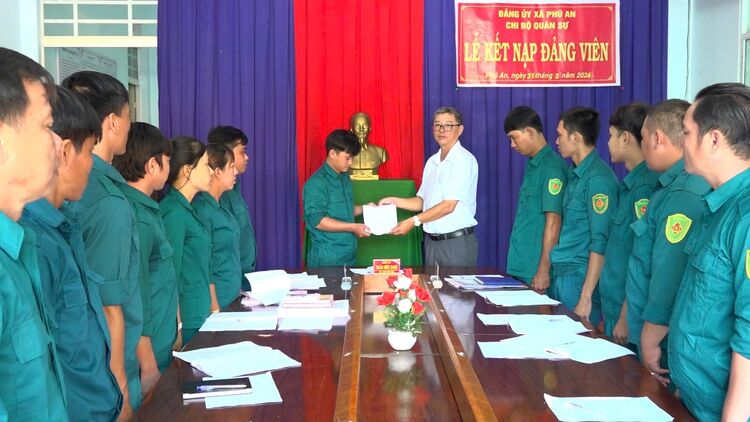








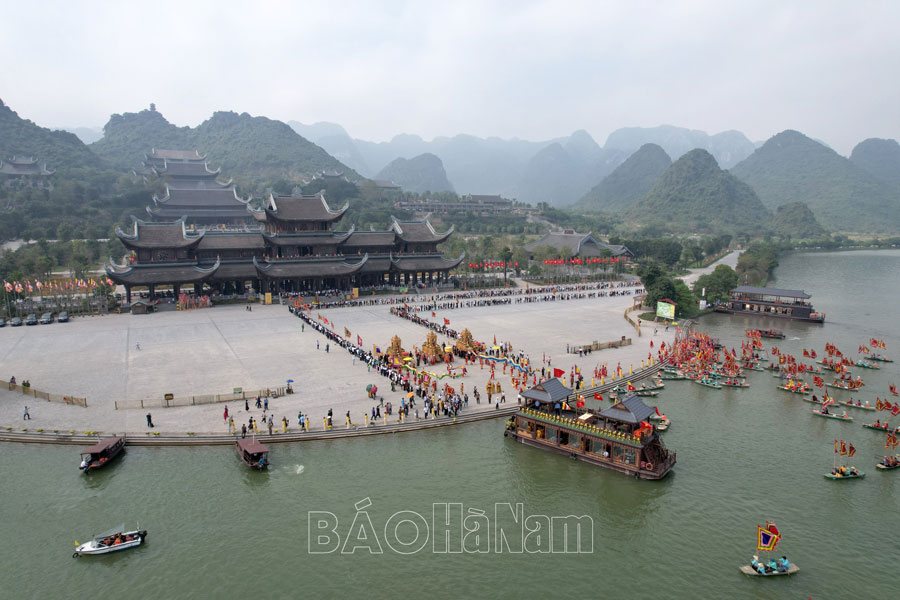

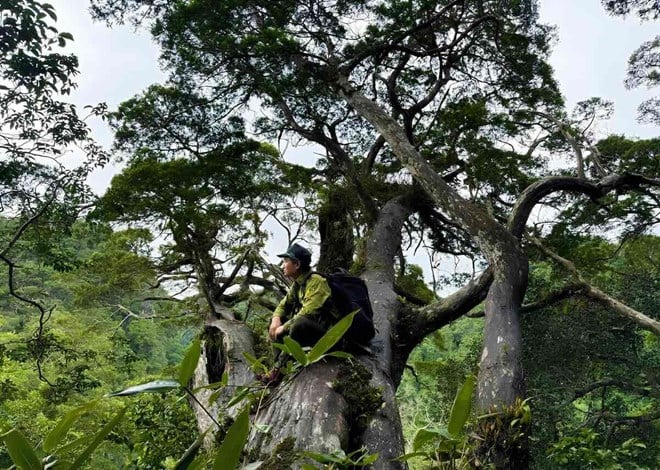
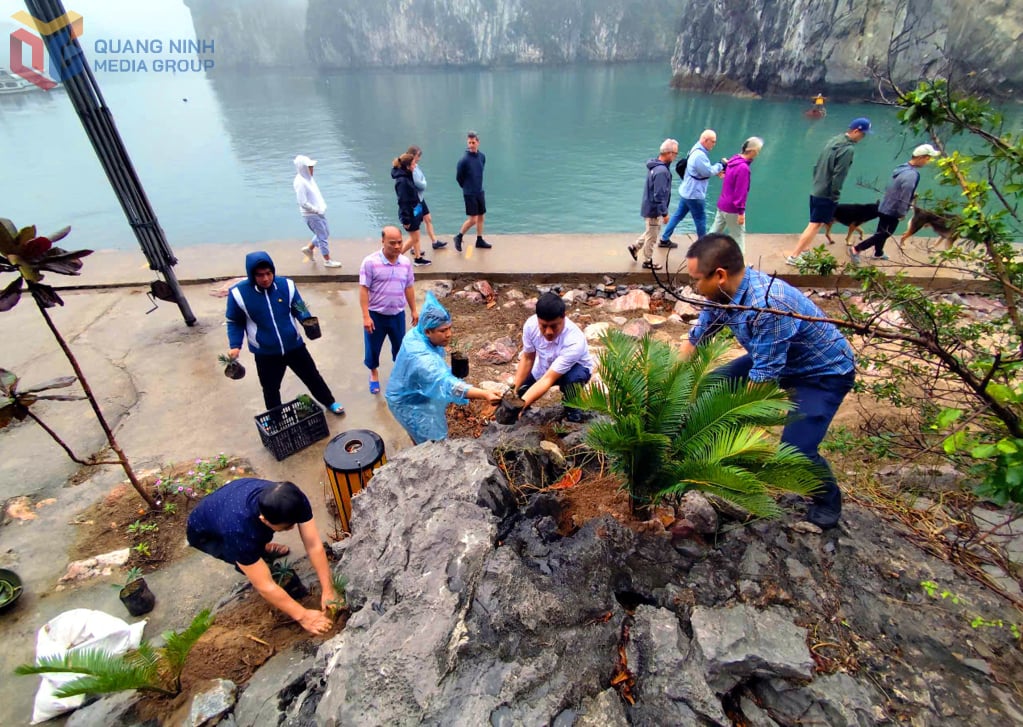

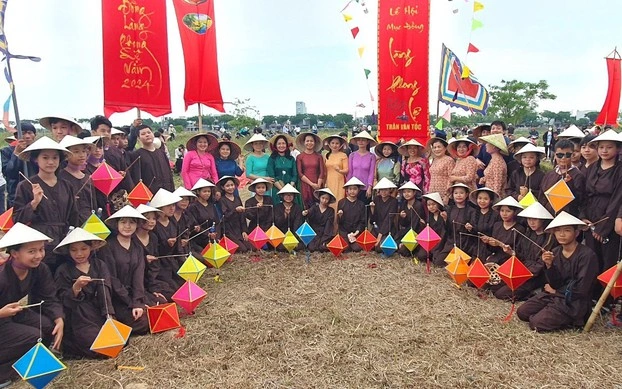






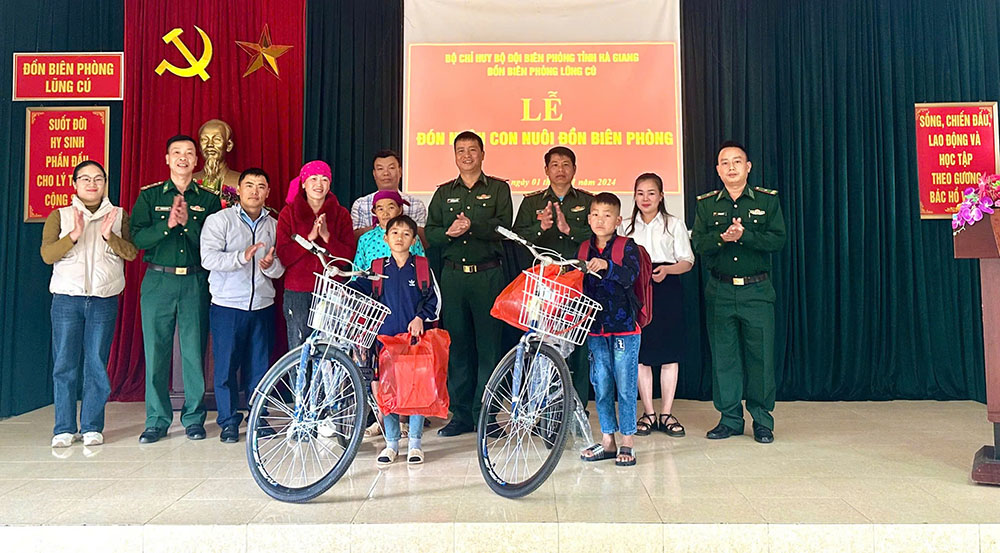


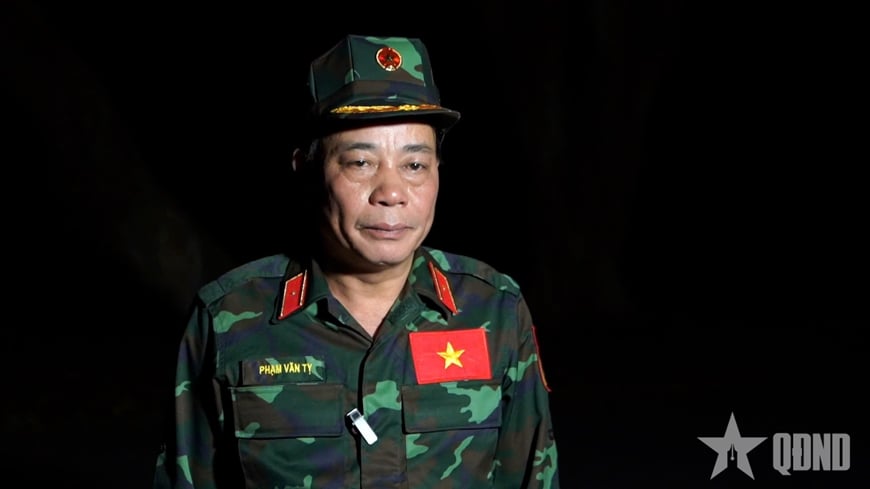

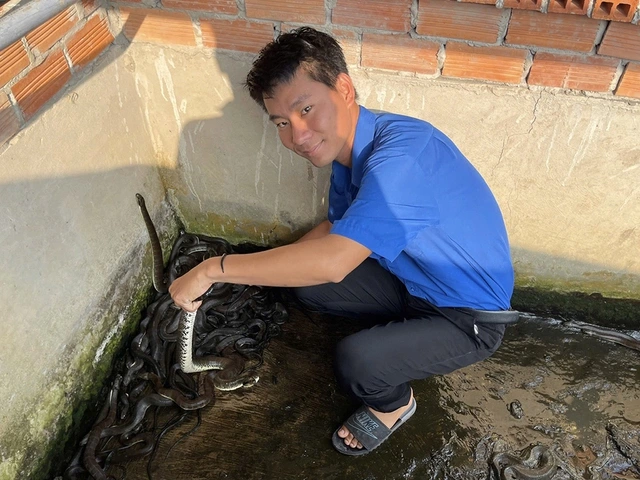











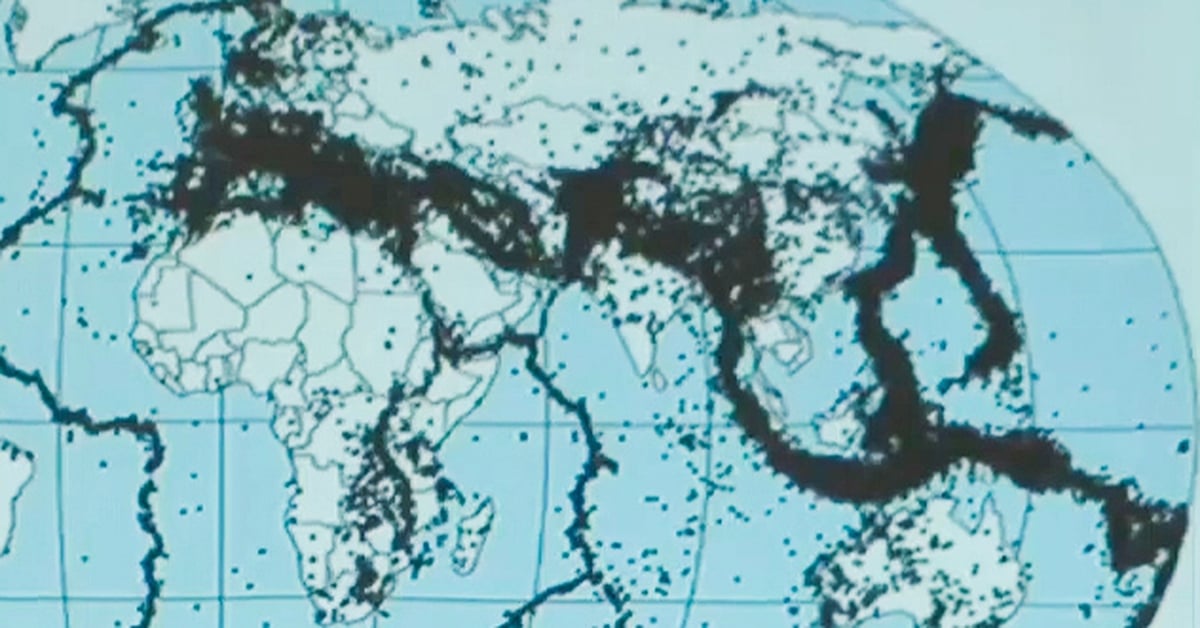

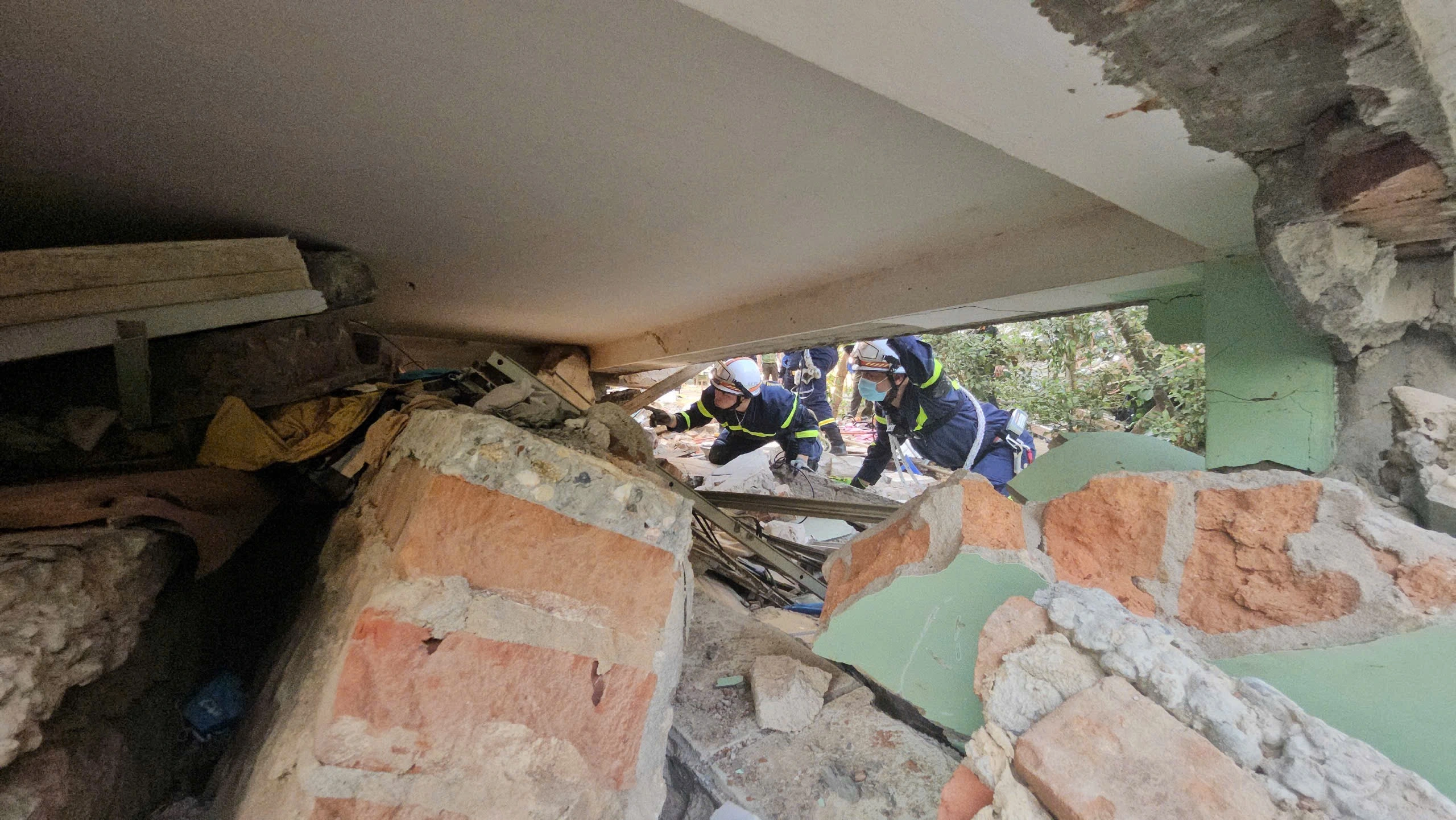











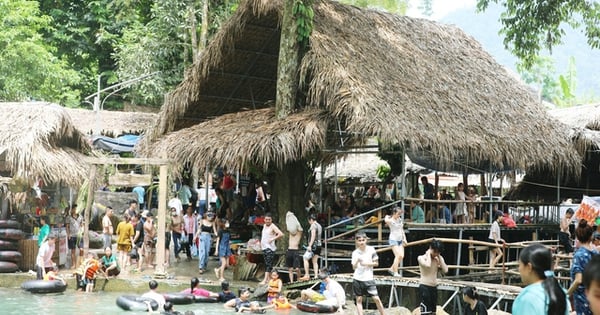
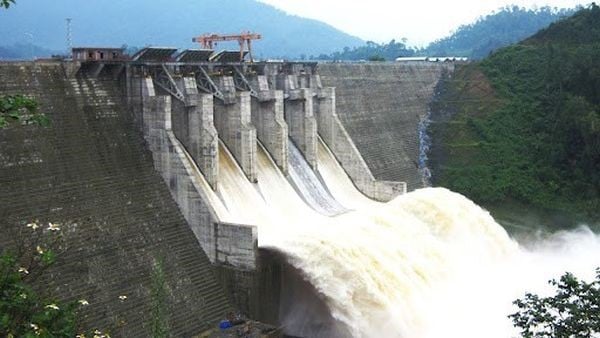


















![[REVIEW OCOP] An Lanh Huong Vet Yen Cat](https://vstatic.vietnam.vn/vietnam/resource/IMAGE/2025/3/27/c25032328e9a47be9991d5be7c0cad8c)
Comment (0)